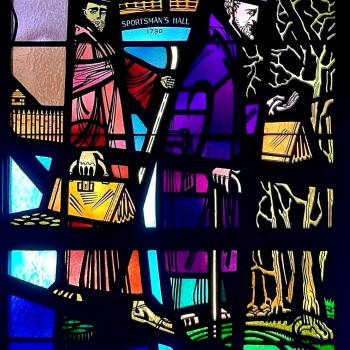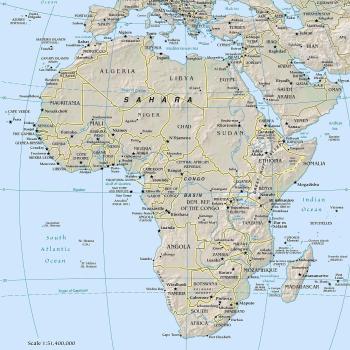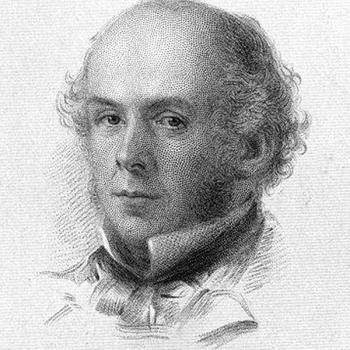This past week has been horrible for Egypt’s Christians. I offer this quote from the New York Times:
In Sohag, Bishop of Mar Girgis [St. George] Church Moussa Ibrahim told Mada Masr that the church was set ablaze by Muslim Brotherhood supporters at 9:30 a.m. in the absence of police forces, despite repeated threats against the church. The biggest church in the governorate, Mar Girgis, is located in Thakafa Square near the Brotherhood sit-in. Three other small churches were also attacked in Sohag, but Ibrahim could not confirm the extent of the damage. … at least two churches — Saint Dimiana, the main church in the city, and Virgin Mary, located in Degla village — were attacked and burned down. Clashes between police and members of Jama’a al-Islamiya are ongoing on the Corniche.
Protesters have repeatedly raised al-Qaeda flags over churches. (I recently discussed the Sohag area in my posts on early Egyptian monasticism).
The story recalls ugly precedents in the country’s history.
In an earlier post, I suggested how slowly Egyptian Christianity faded before the advance of Islam. Still at the end of the tenth century, the official history of the Alexandrian patriarchate was showing few obvious signs of concern, except about the decline of the Coptic language. The actual process took place much later than this, and significantly later than we might assume. Yes, Egypt has long had a substantial Muslim majority, but that change happened several centuries after the initial arrival of Islam.
In my Lost History of Christianity, I cited a crisis that occurred in the fourteenth century. Although Egypt’s Christians had been subject to previous outbreaks of persecution, these events now reached an alarming new intensity. Mobs demanded that Christians and Jews recite the Muslim profession of faith upon threat of being burned alive. The government struck at churches, and confiscated the estates of monasteries, destroying the financial basis of the Coptic Church. And the persecution now reached the whole country, rather than just being confined to Cairo.
Under increasingly violent conditions, many Christians accepted Islam, in a massive wave of conversions. Muslim historian al-Maqrizi reports the unprecedented scale of the change:
Many reports came from both Upper and Lower Egypt of Copts being converted to Islam, frequenting mosques and memorizing the Quran, …. In all the provinces of Egypt, both north and south, no church remained that had not been razed; on many of those sites, mosques were constructed. For when the Christians’ affliction grew great and their incomes small, they decided to embrace Islam. Thus Islam spread among the Christians of Egypt and in the town of Qalyub alone 450 persons were converted to Islam in a single day…. this was a momentous event in Egyptian history.
These events occurred in 1354, at a time when Europe was entering the early Renaissance, decades after the time of Dante, and, more to the point, seven hundred years after the initial Arab conquest of Egypt.
In terms of popular constructions of history, the Egyptian story seems multiply wrong, in the chronology or religious change, and more particularly, of its manner. Partly, we suffer from the curse of over-simple maps. As any number of textbooks and television documentaries tell us, Islam rapidly extended its power over the Middle East, in a movement symbolized as a fast-spreading stain. It is easy to assume that people living in the appropriately tinted areas became Muslim overnight, although in different areas, “overnight” might mean fifty years, or a millennium. The maps, however, imply that conversion to Islam was a swift and painless process. Perhaps infidels rapidly came to acknowledge the superior virtues of Islam!
The notion of an easy, amiable conversion fits well with the many recent books that stress the tolerant nature of Islam, and its reluctance to impose its beliefs by force. (I think of Karen Armstrong’s work). The notion of Islamic tolerance is often associated with idealized pictures of the friendly coexistence that supposedly prevailed in medieval Spain, the convivencia.
But coexistence in some times and places does not preclude persecution in others. Much as Christian Europe treated its Jewish population, good social relationships between Muslims and Christians could endure for decades or even centuries. But in the world of Islam as in Europe, persecution when it did arise could be savage, devastating the minority community, and in both cases, the fourteenth century witnessed a crescendo of violence and discrimination.
I have suggested that rapid climate change around this time played its role, creating a world that was colder, poorer, sicker, and more given to episodes of paranoid fury against visible outsiders.
Undeniably, many Christians and others (Jews and Zoroastrians) were driven to accept the new faith, whether by outright persecution or systematic discrimination, exercised over centuries. Nor did Christianity simply fade away of its own accord, following a centuries-long downward slope to oblivion. The Coptic Church was still highly active through much of what we call the Middle Ages, producing rich scholarship, and a vigorous spiritual life.
Only around 1300 did the axe fall, and quite suddenly.
I would also add one point that we may underestimate. Egyptian Christianity had been firmly rooted in its flourishing network of monasteries and convents, spread over much of the country, and especially in the countryside. Over time, those religious houses had proved tempting targets for raiders, who were Bedouin and Arab, but not necessarily operating out of any religious motive. Like the Vikings in Western Europe, they were just going where the gold and silver was likely to be found.
Over the centuries, though, the weakness of central government and the frequency of civil wars had created a disastrous public order situation in which the old monasteries had been savagely destroyed. Even without any conscious religious persecution, Egyptian Christianity had lost much of its muscle and sinew even before any conscious official decision to weaken it. The fourteenth century persecutions should be seen as a coup de grace.
To stress intolerance in Islamic history does not mean that we must abandon one mindless stereotype – universal convivencia – and replace it with another image, of ceaseless violence and persecution. Anyone who believes that boundless aggression and ruthless tyranny over minorities are built into the DNA of Islam needs to explain the quite benevolent nature of Muslim rule during its first six centuries. Yet advocates of Islamic tolerance must work equally hard to account for the later years of the religion’s historical experience.
Though Muslim regimes could tolerate other faiths for long periods, that willingness to live and let live did fail at various times, and at some critical points, it collapsed utterly. I fear that we are again living in such a dark period of intolerance.
By the way, I just did a column over at Realclearreligion about the prospects for future violence in Egypt, and the dangers of religious warfare.















